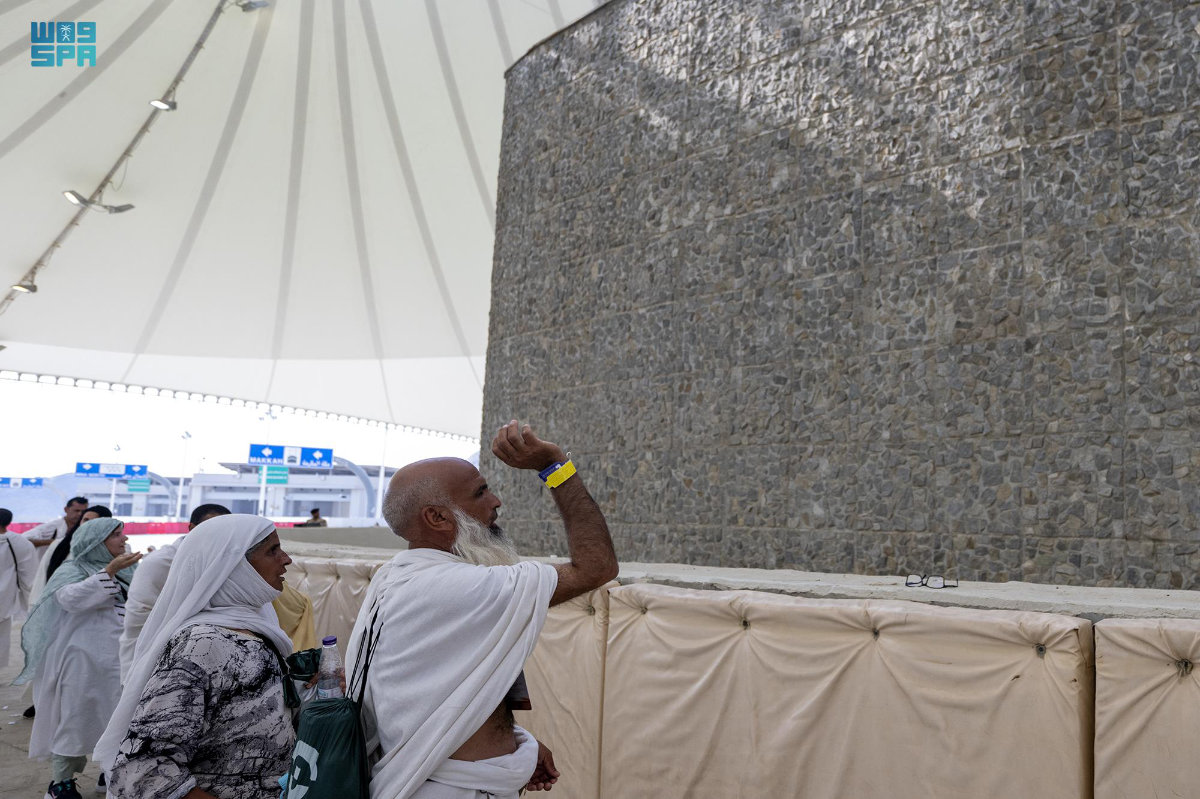MINA: By Sunday night, more than 850,000 pilgrims in Mecca had performed Tawaf Al-Ifada, the ritual that marks the final day of Hajj and the start of Eid Al-Adha for Muslims around the world.
The long day began in sweltering summer heat as thousands of pilgrims in Muzdalifah embarked on the symbolic stoning of the devil, one of the final rites of the hajj, one of the five pillars of Islam.
This came a day after more than 1.8 million pilgrims gathered at the sacred hill called Mount Arafat outside the holy city of Mecca, where Muslim pilgrims go every year to perform the five-day ritual of the hajj, Tawaf al-Ifadah, which is performed by hajj pilgrims returning from Mina.
Saudi Arabia's Interior Ministry spokesman, Colonel Talal bin Abdul Mohsen Al Shalhoub, said at a press conference on Sunday night that all pilgrims who left Muzdalifah had returned safely to their tents in Mina.
He stressed that security forces continue their operations to ensure the safety and security of Allah's guests during their stay in Mina, including rituals on Jamarat Bridge and the Grand Mosque. “These services include accommodation in tents, on all routes connecting the bridge and the Grand Mosque, as well as crowd control and management during the tawaf. We ask all guests to strictly adhere to instructions regarding the performance of rituals,” he said.

Pilgrims throw stones at a pillar in the symbolic stoning, one of the final rites of the Hajj, at the Jamarat in Mina, near the holy city of Mecca, on June 16, 2024. (SPA)
The spokesman also advised pilgrims not to take any personal belongings with them as they make their way to Jamarat Bridge and the Holy Mosque.
“Furthermore, we urge those planning to leave Mina on the second day of Tashreeq to follow the specified guidelines,” he added.
The Days of Tashriq fall on the 10th day of the month of Dhul Hijjah, the three days after Eid al-Adha, and are known for the ritual of stoning the three pillars of Mina, symbolizing the rejection of temptation and evil.
Pilgrims are, however, allowed to leave Makkah before sunset on the 12th of Zul Hijjah. Al-Shalhoub further reported that 911 centers in the Makkah region received a total of 78,872 calls on the 10th of Zul Hijjah, including security reports and service inquiries, all of which were promptly responded to.
He stressed that the Saudi Arabian leadership closely monitors all security sectors, pointing out the continuous improvement in their performance every year. “Our security personnel play an exemplary role in carrying out their duties and facilitating the Hajj journey of pilgrims,” he concluded.
Meanwhile, Deputy Minister for Hajj and Umrah Ayed Al Gwainem said that organizational plans and efforts had been carried out in harmony with all institutions taking part in the Hajj.
“The stoning ceremony was carried out safely and peacefully within just 10 hours, with compliance with the instructions reaching 95 percent,” he said.
He added that the plan was designed to accommodate the diverse legal preferences of pilgrims by utilizing modern technology and pre-planned schedules for grouping pilgrims. Al Ghuwainem said more than 800,000 pilgrims arrived in Mina before dawn on Sunday, and all had arrived in Mina by 8 a.m.
He said around 70 percent of pilgrims who arrived at Jamarat Bridge used the first and fourth floors, while the rest passed through the second and third floors.
“In addition, more than 850,000 worshippers have performed Ifadah Tawaf using shuttle bus services to and from the Grand Mosque since midnight,” he said.
The deputy minister added that the challenge he faces along with the authorities is that despite all the awareness campaigns and the availability of all transport options, most pilgrims prefer to travel on foot. He urged pilgrims to follow instructions.



